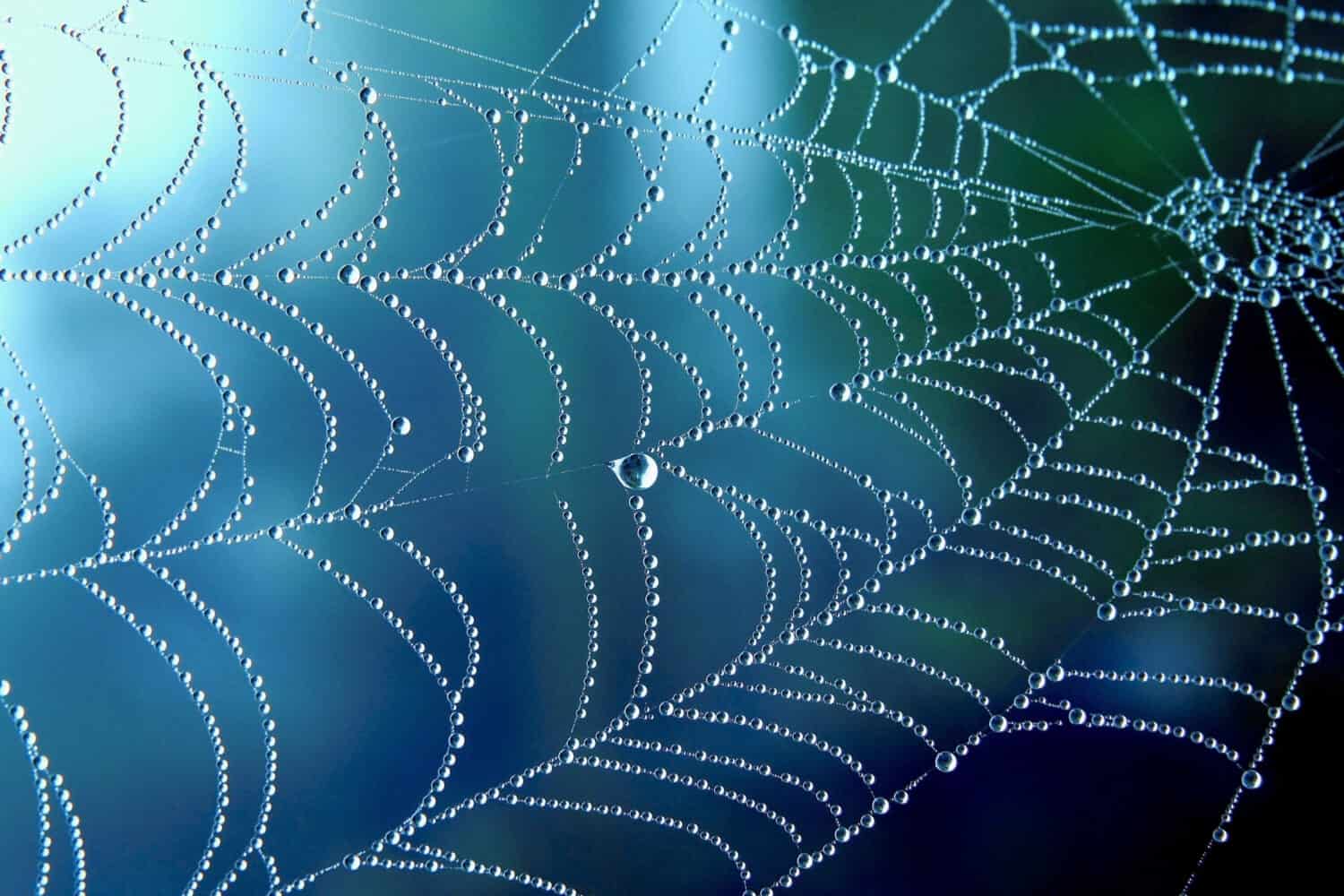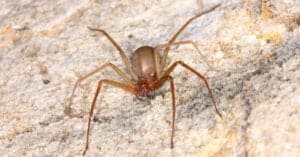Spiders have always been considered one of the creepiest creatures on the planet. Many people fear them without really knowing anything about them. No matter where you live, you will always have one nearby. However, most spiders in the United Kingdom are harmless to humans, and some are actually very beautiful. Here are 9 of the most colorful spiders found crawling around England.
1. Golden-Rod Crab Spider
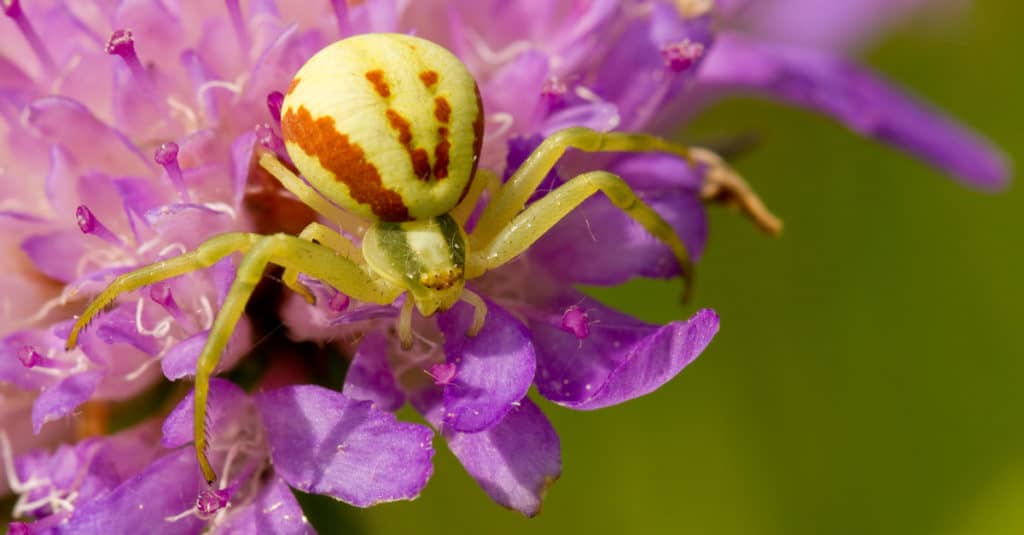
A Golden-rod
crab spider
sitting on a purple flower.
©Radka Palenikova/Shutterstock.com
This spider calls not only the United Kingdom its home but also Canada, Ireland, and the United States. The Golden-rod Crab Spider, scientifically known as Misumena vatia, has a crab-like leg posture with a front pair of legs that are much longer and stronger than the short pairs. The primary colors of this species are brown, white, tan, yellow, red, and pink. What’s interesting about these spiders is their ability to change their color based on their surroundings.
2. Common Candy-Striped Spider
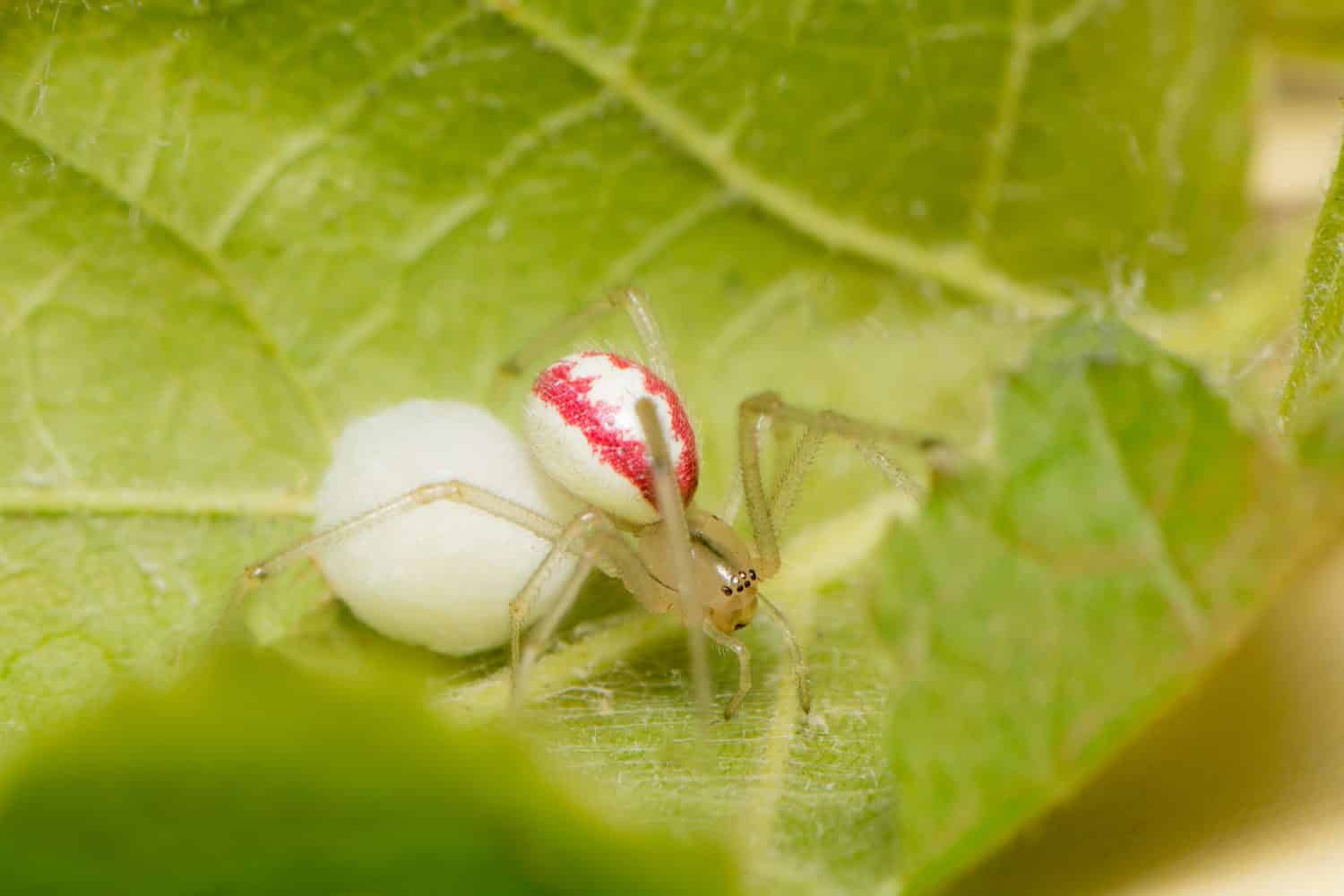
The Candy-Striped Spider has red stripes along its back.
©Muddy knees/Shutterstock.com
The common candy-striped spider, scientifically known as Enoplognatha, is part of the cobweb family and is typically found outdoors. These mostly green spiders have an egg-shaped body and red stripes along their abdomen. Their legs and cephalothorax (the head and thorax) are usually light brown, orange, or greenish and translucent. This species of spider was introduced to the United States and Canada from Europe.
3. Garden or Diadem Spider
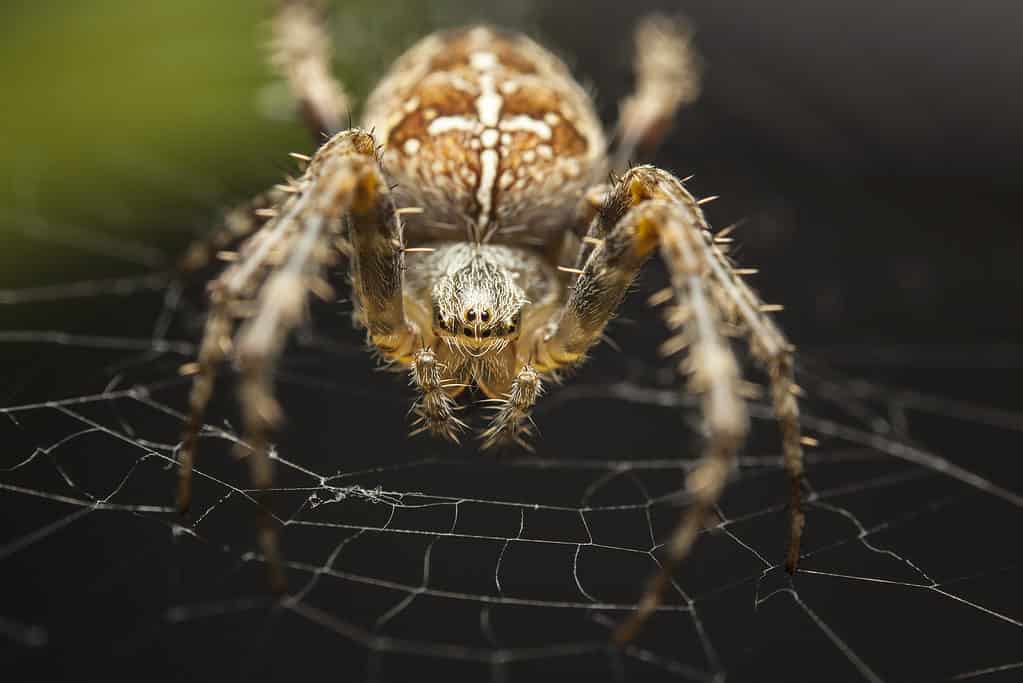
The Garden or Diadem Spider has a diadem shape on its back.
©Ahturner/Shutterstock.com
This spider is named because of the diadem shape on its back, and it comes in a few different colors like brown, yellow-green, and orange. The Diadem Spider, scientifically known as Araneus diadematus, will weave its spiral web along hedges and between tall stems. Even though they aren’t the nicest to look at, these spiders are very beneficial to people because they consume pests normally found in gardens.
4. Four Spot Orb-Weaver

The Four Spot Spider is found in grasslands and heaths.
©Ian Kirk from Broadstone, Dorset, UK / CC BY 2.0 – Original / License
You can spot a Four Spot Orb-Weaver, scientifically known as Araneus quadratus, by its four indented dimples on its abdomen, which is usually outlined with four white spots. These spiders are a bit rounder and plumper than the Garden Spider. The Orb-Weaver can sport a number of different colors on its body, ranging from orange, yellow, white, tan, and grey. They are usually found in grasslands and heaths.
5. Cardinal Spider
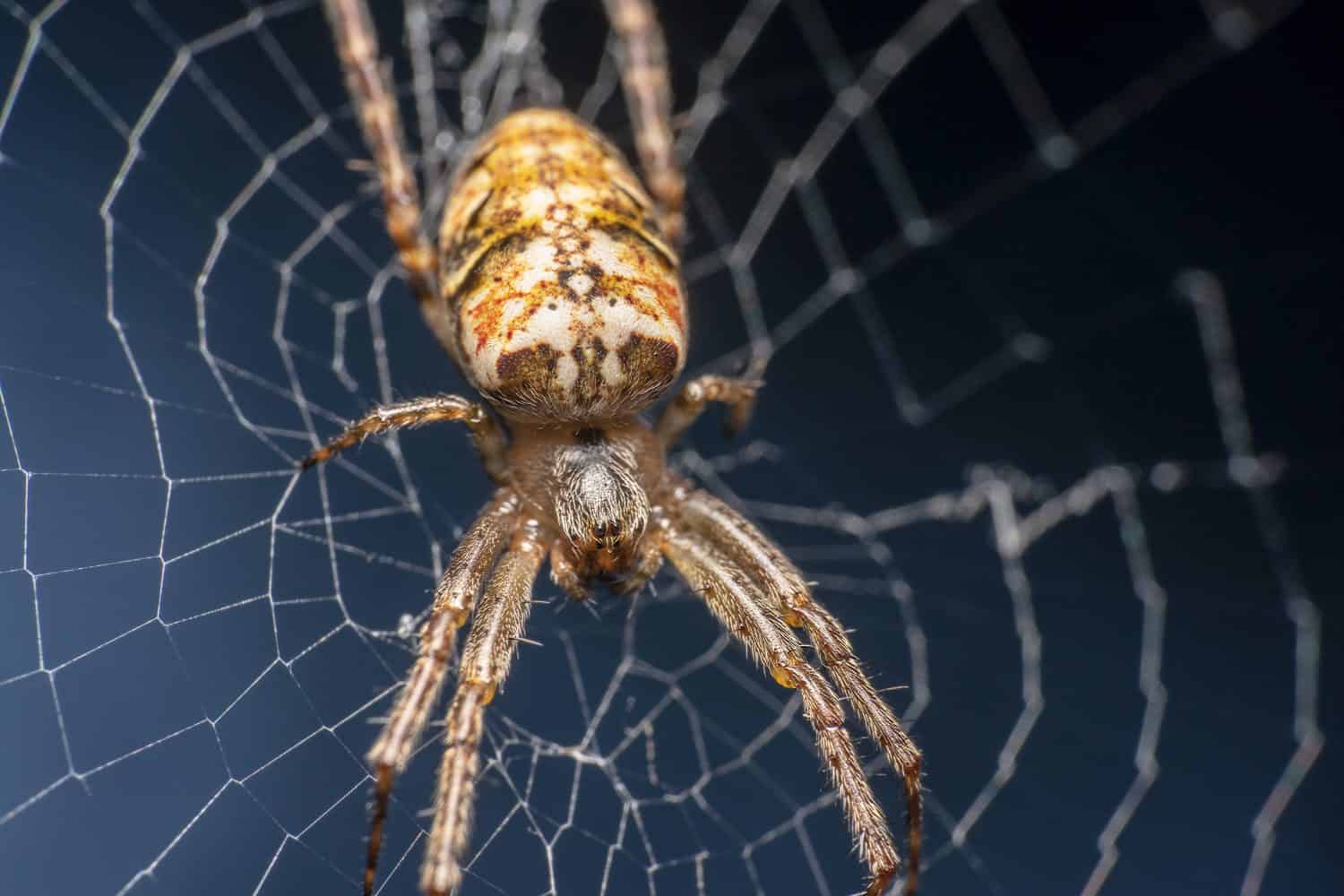
Living in walls of buildings, the Cardinal Spider is one of the biggest spiders in Europe.
©Rav Kark/Shutterstock.com
The Cardinal Spider, scientifically known as Tegenaria parietina, is one of the biggest spiders in Europe. Despite its size, this is one of the rarer species that you will see around. You’ll be able to spot this spider by its brown and reddish body. These spiders mostly live inside the walls of buildings and can also go months and months without food. The Cardinal Spider got its name in the 14th century when Cardinal Wolsey was scared by the sight of the spiders at Hampton Court.
6. Cucumber Green Orb Spider

This greenish-yellow spider lives in shrubbery and hedgerows.
©Sandra Standbridge/Shutterstock.com
The Cucumber Green Orb Spider, scientifically known as Araniella cucurbitina, got its name from the bright greenish-yellow coloring on its abdomen. They typically also have a pink cephalothorax. This spider is very similar to another Cucumber spider and will often be mistaken for one another in the field. These spiders can be found in hedgerows and shrubbery.
7. Zebra Spider
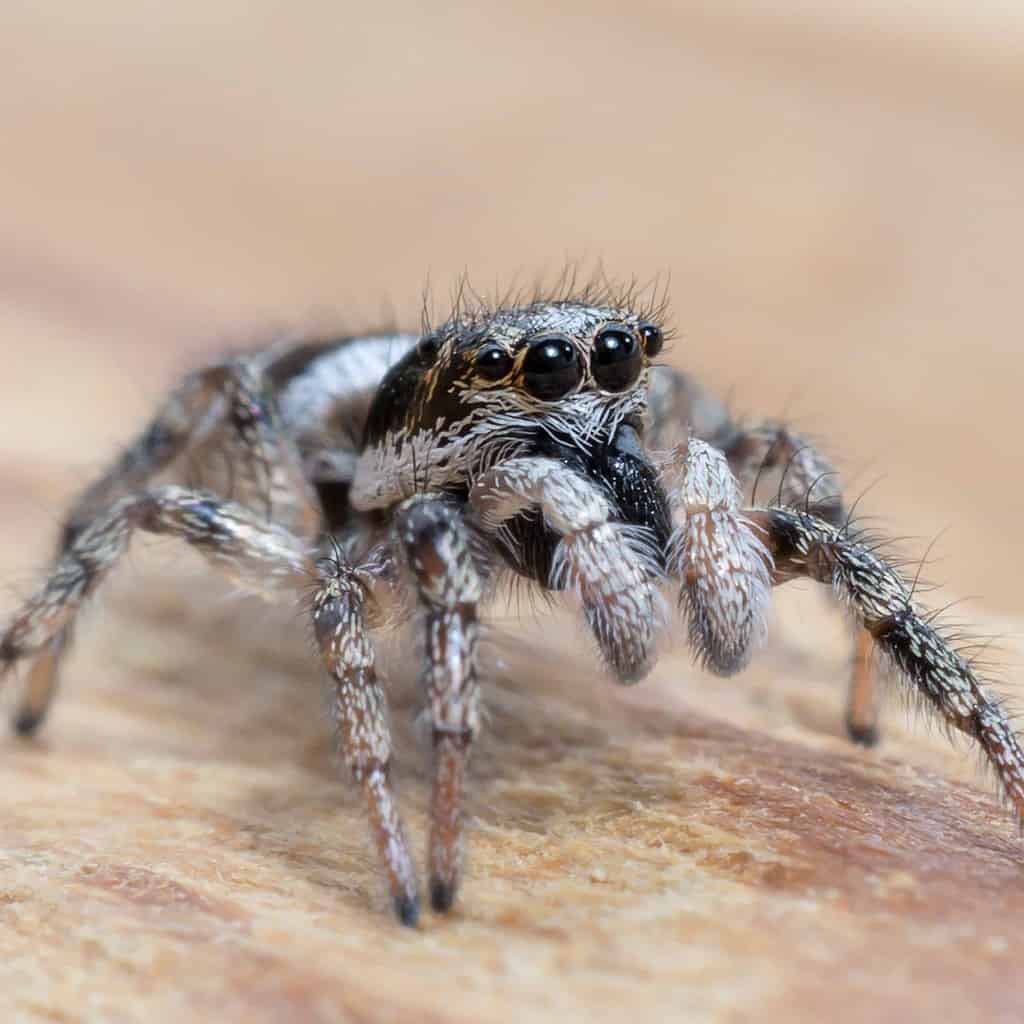
A zebra jumping spider has four pairs of large eyes.
©Photographer: Rabanser/Shutterstock.com
The Zebra Spider, or Jumping Spider, scientifically known as Salticus scenicus, is one of the smaller species of spiders around England. It has a black and white body and four pairs of large eyes. They do not weave a web. Instead, they attack their prey by pouncing on them. Their scientific name even means ‘theatrical jumper.’
8. Wasp Spider
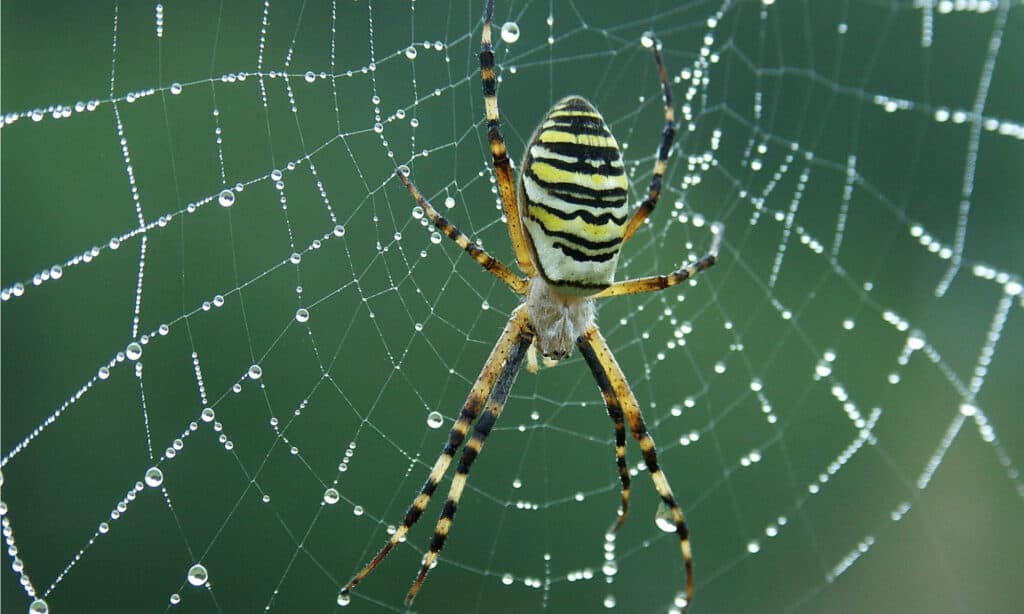
Looking like a wasp, this spider is able to scare off predators.
©Violart/Shutterstock.com
The Wasp Spider, scientifically known as Argiope bruennichi, as the name implies, shares a striking resemblance to a wasp. However, these spiders are harmless. The female has barred black and yellow markings on its body, while the male is small and brown. The Wasp Spider builds large orb webs in heathland and grasslands. Their webs also have wide, white zig-zag strips that run down the middle.
9. Green Huntsman Spider
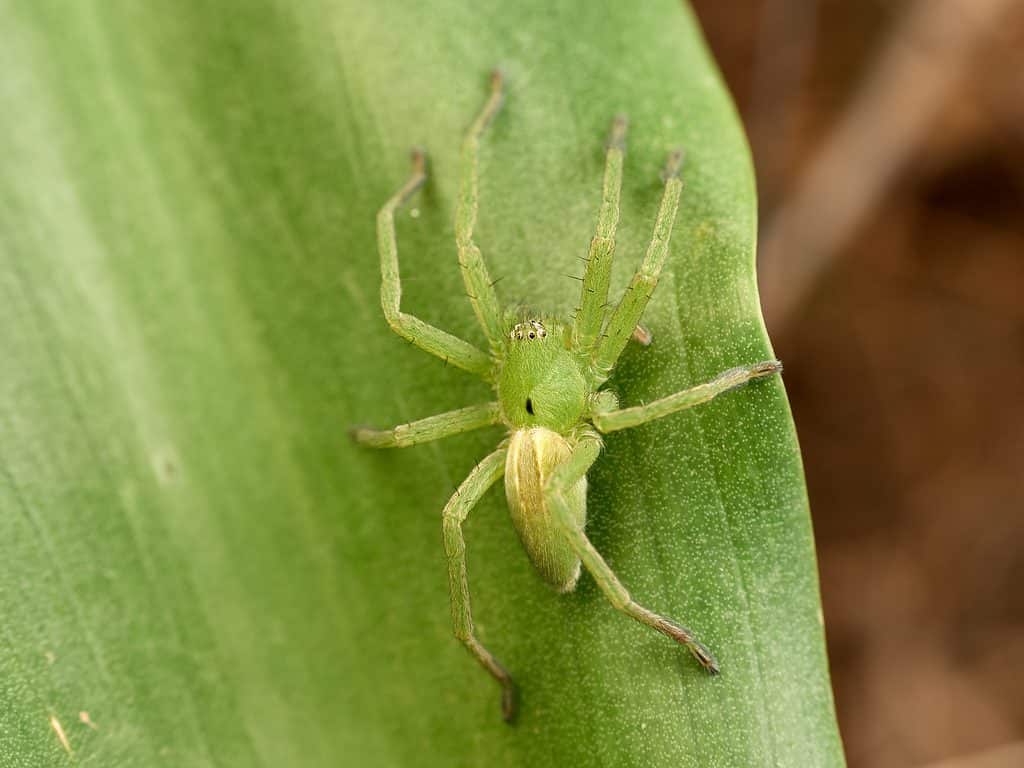
Green huntsman spiders are found in woodlands, gardens, and other vegetated habitats.
©Macronatura.es/Shutterstock.com
The Green Huntsman Spider, scientifically known as Micrommata virescens, is a part of the Sparassidae family. The Huntsman is known for being dangerous in other parts of the world but not so much in the United Kingdom. Females have bright green bodies, and their abdomens also have light green hues with dark green median stripes. The males, on the other hand, are olive green in color and possess red or reddish-brown median stripes on their abdomen with borders of yellow.
Thank you for reading! Have some feedback for us? Contact the AZ Animals editorial team.

